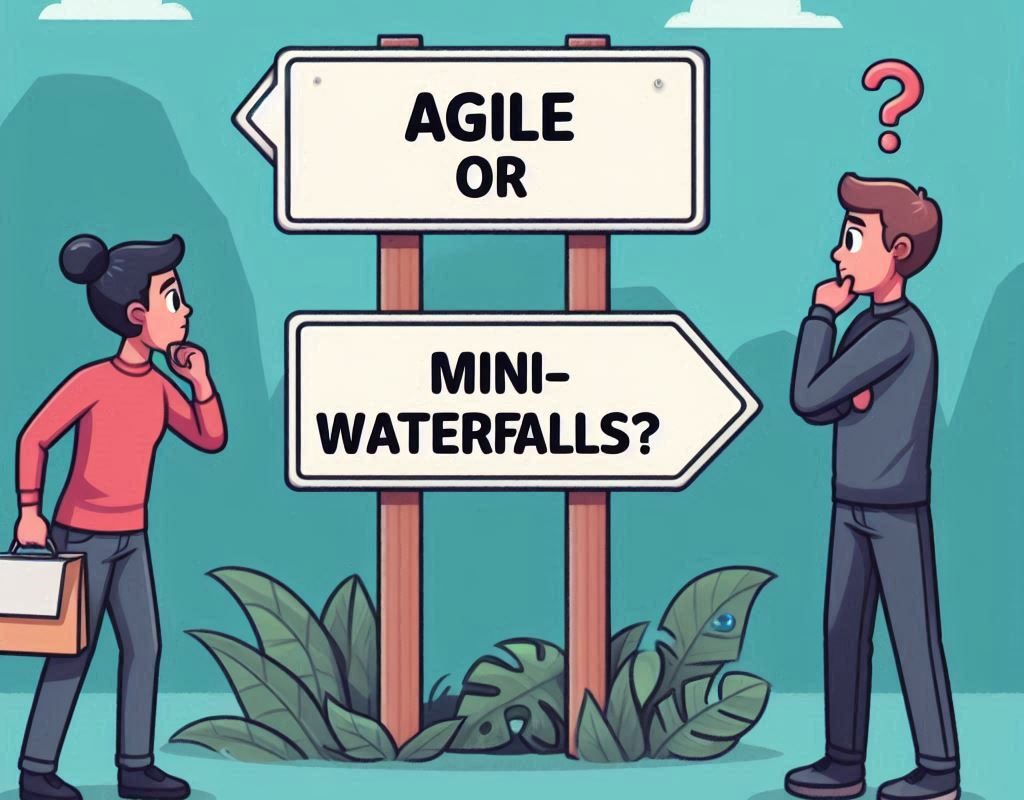Agile is a software development methodology that prioritizes iterative development, teamwork, and customer input. It has gained popularity recently as businesses recognize the advantages of delivering functional software more swiftly and adapting to market changes more readily.
However, many companies adopt agile in a manner that isn’t truly agile. Instead, they follow a “mini-waterfall” approach, segmenting the project into a sequence of small, linear steps. This approach can lead to several issues, such as:
- Higher risk of delays and missed deadlines
- Lower customer satisfaction
- Increased costs
- Reduced innovation
So, what differentiates agile from mini-waterfall?
Agile:
- Iterative development: The project is divided into small, incremental steps, with each step completed before moving on to the next.
- Collaboration: The team works closely together to ensure the project aligns with customer needs.
- Customer feedback: The customer is involved throughout the development process, allowing their feedback to be incorporated continuously.
Mini-waterfall:
- Linear development: The project is divided into a series of small, sequential steps.
- Minimal collaboration: Team members work in isolation, with little communication between them.
- Minimal customer feedback: The customer is not involved in the development process until the project is nearly complete.
As evident, the mini-waterfall approach does not truly embody agile principles. It lacks emphasis on iterative development, collaboration, and customer feedback, leading to the aforementioned problems.
For those considering agile implementation, it’s crucial to do so in a manner that truly reflects agile values. This will enable you to experience the benefits of agility, such as:
- Faster time to market
- Higher customer satisfaction
- Lower costs
- Enhanced innovation
How to Avoid Mini-Waterfalls:
To prevent falling into the mini-waterfall trap while adopting agility, consider the following strategies:
- Break down projects into small, manageable chunks: This approach makes managing the project easier and helps ensure timely completion.
- Involve customers throughout the development process: This ensures the project meets their needs, and they are satisfied with the outcome.
- Use agile tools and techniques: Leverage tools and methodologies designed to support agile practices.
- Train your team in agile principles: Ensure your team understands agile principles and knows how to implement them effectively.
By adhering to these guidelines, you can avoid the pitfalls of mini-waterfalls and successfully implement agile practices that will benefit your business.








